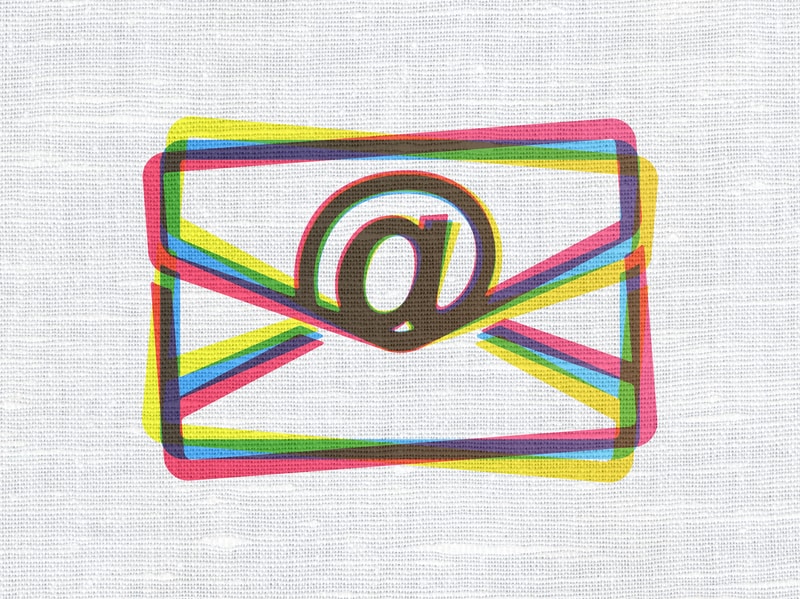
Why Your Email Newsletter is Failing

Why Your Email Newsletter is Failing
You did it! You launched an email newsletter just like all of those marketing gurus on the internet said you should. And it’s great! You love it! You think you’re rocking it!
There’s only one problem: no one seems to be reading it. In fact, your emails are being marked as spam and your subscribers are jumping ship. Or, they’re staying on board but they’re not actually converting into customers. What are you doing wrong? Let’s take a look at just a few ways your email newsletter might be failing you.
1. It’s Too Salesey
Of all the many forms of digital marketing, email marketing can be especially powerful because it has the most space for a more businesslike interaction. Unlike on social media, where you must be super casual at all times, email marketing does allow for some degree of traditional marketing, like offering coupons and announcing sales.
Still, too often many businesses go way overboard. Email is still far more casual than traditional advertising. Your email newsletter is far more likely to end up in the trash or worse yet in the spam folder if it’s all marketing from top to finish. In fact, taking this approach to email marketing is like expecting your audience to turn on the TV to an advertising-only channel and shout, “Hurray! An entire three hours free to watch only ads!”
While salesy language or approaches here and there aren’t out of the question, it’s much better for the bulk of your email newsletters to take a more content-driven approach, much closer to that of a magazine. Provide your readers with actionable expert tips that only you can provide. Offer up savvy quotes. Give your audience beautiful images to look at that aren’t product-focused.
At Alt Creative, we noticed a huge difference in our open rate once we added a section with inspiring images of our favorite fonts of the month. Our design-savvy clients have raved about how much they love getting that email — and they still open what we send.
2. They’re Not Relevant
Too often, companies take shortcuts when building their mailing list, buying email addresses and names wholesale. Neither of these pieces of information tell the company anything about their audience members, let alone what their interests are. As in all things, quality is better than quantity. There’s no point in sending emails to someone who would never in a million years consider buying your product.
Instead, it’s much better to know your demographic inside and out. Put together a detailed marketing persona that breaks down exactly who you’re targeting, why you’re targeting them, and how they’ll be best appealed to. Then build your list by beating that pavement. Make it easy for customers to sign up for your newsletter on your site and from purchase order emails. Sync your email and social media campaigns. Have customers sign up for your newsletter in-store. This way, you’ll ensure the people who are on your list have already expressed organic interest in being there.
Even better: segment your email lists from the get go. As your audience is signing up, ask a few questions that will help you categorize them into different subject areas. You might, for instance, want to send a different email to your enterprise customers than to your individual customers, or a different one to your customers who have expressed interest in your shipped muffins business rather than in your cookie business (we’ll sign up for the cookie portion, please!). Lists like these will empower you to send the most relevant emails right when they’re most needed so that your readers feel like you’re reading their minds rather than spamming them.
3. They Ignore Timing
For some industries, it doesn’t really matter when a reader signs up; whatever you send them will still be relevant. In other industries, timing really does matter. If, for instance, your target demographic is pregnant mothers, you’re going to want to send different content to them when they’re one month in than when they’re at eight months and ready to pop. The same can be true when you’re selling a coaching service and want to begin by identifying a reader’s core problem before moving them up into solutions and eventually into a paid package.
For both of these kinds of businesses and many more, it’s a much more effective to use an email drip campaign, which sends emails you’ve already written in a logical manner and ends in a clear call to action (CTA). At the end of the campaign you might naturally move the reader onto a non-drip list, but even then you’ll still want to make sure they’re well-segmented.
4. It’s Not Optimized
There are many ways you might be failing to optimize our email newsletter:
- Mobile: If your email newsletter isn’t optimized for viewing on a wide variety of devices, it may be impossible for many readers to consume. Most good email marketing services should have this covered at this point, so if they don’t, it’s time to switch!
- Tracking: A good email marketing service will also provide you with powerful metrics so that you can know exactly who and how many people are opening your email, how much they’re reading and what they’re clicking on. This last one is especially important because it helps you determine what headline language, subjects, incentives, and CTAs work best for your audience.
- CTAs: On that note, your newsletter isn’t optimized if it doesn’t have any calls to action in and at the end of your post. Whether it’s an incentive to buy, something that brings your reader deeper into your brand, or a resource that will help build trust and expertise, every email should have some kind of purpose to it — just not necessarily a salesy one.
- Social Media: Every time you contact a customer, you want to make sure you’re syncing up every marketing arm you have so that they can interact on the mediums they most prefer. For email marketing this means adding a social media bar linked to all of your accounts somewhere in your email so that readers can connect. It’s also a good idea to link to your blog. Ideally, you’ll keep your email newsletter itself formatted in a short and sweet manner that drives readers to your blog for the full article, where they’ll also be more prone to click around on your website.
5. They’re Too Much (or Too Little) of a Good Thing
Frequency really, really matters when it comes to email newsletters. Send an email too often and you’ll be perceived as spam. Send an email too infrequently and you’ll still be perceived as spam…because no one will remember who you are or ever signing up for your list. You’ll also miss out on many opportunities to convert readers into customers.
Just how frequently to send your email newsletter is another question, one that again depends on your industry and your customers. Once a week seems to be a good amount, though two or three times a week can be merited if your content really is more information- and knowledge-heavy than it is sales-driven. The best way to determine your ideal frequency is to test it out. Try sending at different frequencies and see how your open and click through rates raise and lower.
6. It’s Not Consensual
Readers won’t respond well if they didn’t actively subscribe to your list, nor will they be very kind to you if there’s no way to easily unsubscribe. In fact, both of these things are legal requirements, so don’t attempt to circumvent them. Remember, email marketing only works if readers actually want to read what you have to offer. Trickery gets you nowhere.
7. It’s Just Not Interesting
We hate to say it, but sometimes your email newsletter is failing because it’s just a snoozefest. Maybe it’s written in a super jargony voice that no one wants to listen to. Maybe you regularly cover the same stuff, and not in new and interesting ways. Maybe you only cover topics about which everyone already know everything there is to know.
What should you do instead? First, don’t be afraid to get casual and humorous with your voice within professional bounds. This is much more fun to read! Mix it up with a wide variety of content and content approaches, from infographics to looks behind the scene at your office or of the production process, to funny or motivational quotes. Offer interesting and new contests and incentives. Just keep it fun, helpful and fresh!
In Short
An email newsletter that’s well done can be a powerful brand and expertise builder, as well as a great way to drive traffic to your website and convert customers. But readers today are both savvy and overwhelmed. Sticking to these best practices will ensure that both you and your readers are getting the most out of your email marketing efforts.
Ready to get your project started?
Get your free consultation and pricing quote by filling out our quick ‘request a quote’ form. We’ll answer all of your burning questions and help find the right solution for your project.
Request a Quote



